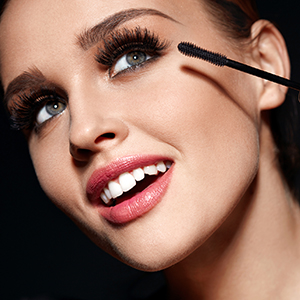Governed by rapid changes and constant newness, the U.S. cosmetics and toiletries market is picking up the pace in 2017, growing by almost 1% faster than in 2016. New trends and exciting product launches are in, while consolidations in the industry continue, with several key shifts among the top players. As our annual flagship report – Cosmetics & Toiletries USA is now in publication with most of the chapters already being available, Naira Aslanian, the report’s project manager, answers questions on key discoveries.
What product classes show the most robust performance?
Makeup and skin care remain the strongest performing product classes, each recording solid growths of approximately 6%. The desire for flawless skin helps the facial skin care category record its strongest growth in the last five years of 7% in 2017. Driven by direct and luxury brands that set trends, the growth is strong both from established players, such as La Mer and IT Cosmetics, as well as relative newcomers, such as Glossier and Beautycounter.
What is the slowest performing product class?
Hair care is the slowest performing product class; however, multicultural hair care continues to be fastest advancing category, recording more than 6% growth in 2017, albeit constituting the largest proportion of the total. The natural movement drives several established marketers to reformulate existing hair care lines with natural infusions or launch new naturally-positioned products.
Can you talk about the competitive landscape?
The year 2017 witnesses another year of investments, mergers, and acquisitions as larger companies strengthen their positioning or capture niche markets through acquisitions of indie brands. The cosmetics giants continue to dominate the market, with an almost 60% share; L’Oréal remains the market leader, but some shifts occur. Unilever and Estée Lauder become the second and third largest players in the market, respectively, driven by brand acquisitions across product categories, thereby moving Procter & Gamble to the fourth position from its earlier position of being the second largest player.
Is there any specific topic that has come to light in 2017?
Lash extensions and eyelash enhancers continue be a hot beauty trend throughout 2018, one which is closely monitored in the first edition of our Lash Enhancer Products and Services: U.S. Market Brief report, coming out this summer. Amazing Lash Studio, a leading lash service franchise located in the United States with a heavy concentration in Texas, is expanding quickly and recently opened its first studio in Washington this spring, reaching more than 180 open studios across the country. Consumable lash enhancement products are also gaining more momentum.
What are the popular products in lash extensions?
According to Amalgam Beauty Digital Product Tracker, the top ranked products in the eyelash enhancers segment in April 2018 are Lavish Lash Hairgenics Lavish Serum, Grande Cosmetics GrandeLash-MD, Pure Biology Advanced Lash Lash & Brow Enhancing Serum, and Shiseido Full Lash Serum. Amalgam also reveals that these lash products improve their rank in the overall facial skin care category in April 2018, demonstrating a greater demand for the effortless beauty look.
What does the future of the U.S. cosmetics and toiletries industry look like?
Sales of cosmetics and toiletries in the United States are projected to grow at a CAGR of 4% by 2022. Both makeup and skin care are expected to continue driving the market over the next five years. Existing naturally-positioned brands and new indie brands are expected to drive growth, as more people look to cultivate healthy lifestyles and eliminate toxins from their beauty and skin care regimes. Targeted products for different demographics and skin concerns are also expected to be on the rise.

